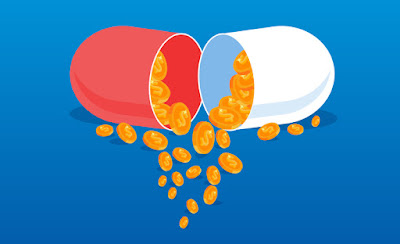Prescription Drug Spending Varies by Private, Public Payers
Medicare, Medicaid, and private payers covered 82 percent of prescription drug spending in 2017.
Total prescription drug spending reached $333 million in 2017, but the
way that lump sum was divided among Medicare, Medicaid, and
employer-sponsored health plans may reveal differences between the
populations each payer covers, according to a May analysis from the Kaiser Family Foundation (KFF).
Combined, employer plans, Medicare Part D, and Medicaid covered 82 percent of all prescription drug spending in 2017, while out-of-pocket patient costs covered 14 percent.
Broken down by payer, the analysis showed that private insurers ate the biggest piece of the prescription spending pie. Employer-sponsored health plans paid for 42 percent of total prescription drug spend, while Medicare Part D covered 30 percent and Medicaid covered 10 percent.
The analysis also revealed significant variation in the costs of certain
drugs. For example, the top five most expensive drugs accounted for 10
percent of prescription drug spending
across all three of the studied payers. These most expensive drugs
accounted for 13 percent of private payer costs, while they accounted
for 10 percent of costs for both Medicare Part D and Medicaid.
What’s more, these drugs weren’t being prescribed as frequently as drugs that took up less of the share of spending. When looking at the top 50 drug products, the researchers revealed that they accounted for up to 43 percent of spending, even though they only accounted for up to 15 percent of all prescriptions.
Expensive prescriptions accounted for 39 percent of spending for private insurers, but only 8 percent of prescriptions. A similar scene unfolded for Medicare, which funneled 43 percent of its prescription drug spending on only 15 percent of its prescriptions. For Medicaid, those numbers come out to 41 percent of drug spend for 8 percent of prescriptions.
And when looking at healthcare spend on an individual patient, the researchers found that prescription drug costs accounted for a larger share of spending for privately insured and Medicare beneficiaries.
Drug spending accounted for 13 percent of individual patient costs in private insurance plans and 15 percent of individual costs in Medicare Part D plans. Drug spending only made up 6 percent of individual patient expenditures under Medicaid.
Additionally, the report noted the types of drugs each payer covered. Private insurers covered Humira, a drug for rheumatoid arthritis, most frequently. For Medicare Part D and Medicaid, the most commonly prescribed drug was Harvoni, a medication for hepatitis C.
When looking at the top ten most commonly prescribed drugs, there was some overlap, the researchers pointed out. All three payers frequently covered Harvoni as well as Lantus Solostar, an insulin drug.
“Despite the overlap, the ranking of these drug products generally differs across payers, and there is also variation in which products have the largest total spending for each payer, which reflects the different types of populations covered,” the researchers explained.
“In particular, for Medicare Part D, the top 10 list includes treatments for cancer, chronic obstructive pulmonary disease, and high cholesterol which are more commonly used by older adults,” they added. “For Medicaid, the top 10 list includes several psychotherapeutic medications, reflecting the important role that Medicaid plays in meeting the needs of people with mental illness.”
Additionally, antibiotics and asthma medications were more common in large, employer-sponsored plans. High blood pressure and high cholesterol drugs were more common in Medicare Part D.
Although payers carried the bulk of prescription drug costs, out-of-pocket patient spending was also an important player, the researchers noted. Fourteen percent of the $333 billion in prescription drug spending fell to the consumer in 2017.
Out-of-pocket costs were higher for those in Medicare Part D plans than those in employer-sponsored plans, although both populations saw reductions in financial responsibility between 2016 and 2017. More patients in Medicare Part D plans had high out-of-pocket costs (costs totaling over $200) than did in employer-sponsored plans, with 40 percent and 16 percent of patients incurring costs, respectively.
As noted above, these results underscore key differences between the primary populations covered by each payer. Those enrolled in employer-sponsored plans tend to be younger and healthier, as made evident by the high proportion of antibiotics private payers cover as opposed to chronic care management drugs.
Conversely, Medicare Part D and Medicaid both cover an aging or more vulnerable population. These patients have more complex conditions that are often chronic or more serious, as made evident by the numerous care management or cancer care drugs prescribed.
While these payers may not cover as many beneficiaries as employer-sponsored plans – KFF says 43 million beneficiaries are enrolled on Medicare Part D and 72 million are covered by Medicaid – their spending remains high because of the acuity of patient needs.
This report likewise underscores the high costs of prescription medications. Regardless of payer type, prescription drug spending serves as a key burden. Alleviating these costs may allow payers to allocate funds to other population health challenges.




Public has become very aware about health insurance and medicare..Chip application pa
ReplyDelete